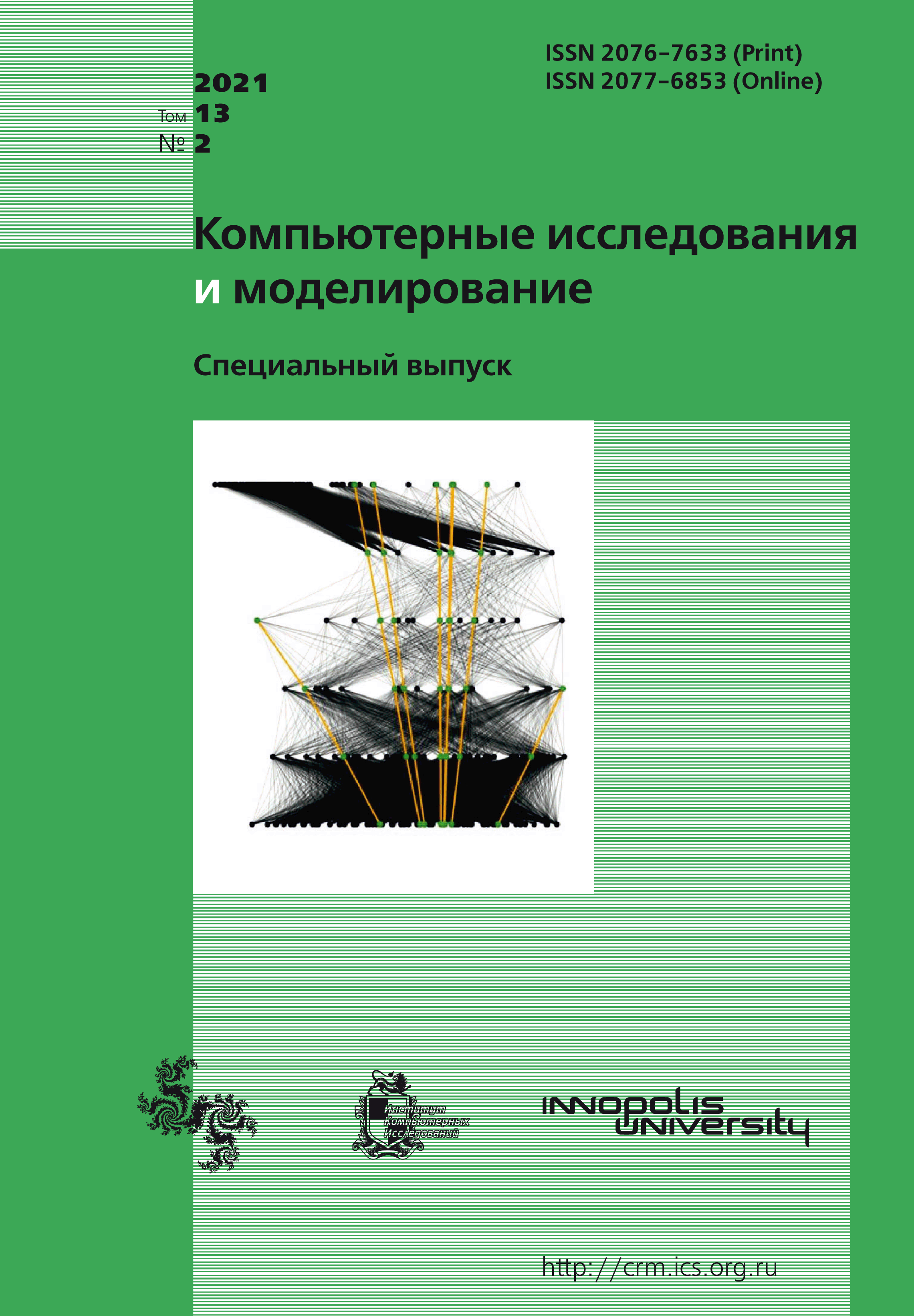All issues
- 2025 Vol. 17
- 2024 Vol. 16
- 2023 Vol. 15
- 2022 Vol. 14
- 2021 Vol. 13
- 2020 Vol. 12
- 2019 Vol. 11
- 2018 Vol. 10
- 2017 Vol. 9
- 2016 Vol. 8
- 2015 Vol. 7
- 2014 Vol. 6
- 2013 Vol. 5
- 2012 Vol. 4
- 2011 Vol. 3
- 2010 Vol. 2
- 2009 Vol. 1
Methods for resolving the Braess paradox in the presence of autonomous vehicles
 pdf (14510K)
pdf (14510K)
Roads are a shared resource which can be used either by drivers and autonomous vehicles. Since the total number of vehicles increases annually, each considered vehicle spends more time in traffic jams, and thus the total travel time prolongs. The main purpose while planning the road system is to reduce the time spent on traveling. The optimization of transportation networks is a current goal, thus the formation of traffic flows by creating certain ligaments of the roads is of high importance. The Braess paradox states the existence of a network where the construction of a new edge leads to the increase of traveling time. The objective of this paper is to propose various solutions to the Braess paradox in the presence of autonomous vehicles. One of the methods of solving transportation topology problems is to introduce artificial restrictions on traffic. As an example of such restrictions, this article considers designated lanes which are available only for a certain type of vehicles. Designated lanes have their own location in the network and operating conditions. This article observes the most common two-roads traffic situations, analyzes them using analytical and numerical methods and presents the model of optimal traffic flow distribution, which considers different ways of lanes designation on isolated transportation networks. It was found that the modeling of designated lanes eliminates Braess’ paradox and optimizes the total traveling time. The solutions were shown on artificial networks and on the real-life example. A modeling algorithm for Braess network was proposed and its correctness was verified using the real-life example.
Copyright © 2021 Belkina E.A., Zhestov E.A., Shestakov A.V.
Indexed in Scopus
Full-text version of the journal is also available on the web site of the scientific electronic library eLIBRARY.RU
The journal is included in the Russian Science Citation Index
The journal is included in the RSCI
International Interdisciplinary Conference "Mathematics. Computing. Education"






